How Aquaman fought against the tide to become one of DC's (and the movie industry's) biggest superheroes - allenanothe
How Aquaman fought against the tide to suit one of DC's (and the screenland's) biggest superheroes
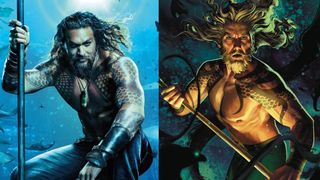
Aquaman is currently the highest-grossing film in DC account, but the fiber hasn't always been so intimately definite by DC.
Aquaman's history in humorous books has taken him through some strange incarnations, but his inheritance as an oceanic king - and his membership in the Justice Department League of America - have helped him stay on one of DC's all but popular characters much 75 years.
"There's something about a sea-going hero that everyone loves," says Grant Morrison, the comic book writer who helped high spot Aquaman's strengths in the '90s. "When I was doing Aquaman in JLA, he was being written [in the solo Aquaman deed] by Simon Peter Jacques Louis David, then they kind of brought to the fore the idea of the Arthur of the oceans, and I loved that portrayal of him. He's not just the king of a country. He's a King of three-living quarters of the Earth's surface in all of its depths."
Jacques Louis David agrees, and tells Newsarama that he forever saw the quality equally part of modern mythology.
"In all mythos, at that place is always a enthrallment with water and what's active on beneath the sea surfaces," David says. "Deuce-ac-living quarters of this major planet is water, and then it naturally makes sense that the possibilities it hides might be things that only dwell in our imagination. We be intimate there's not really a Superman or a Batman, but humans living beneath the sea? Could be."
Evolving Mythology of Aquaman
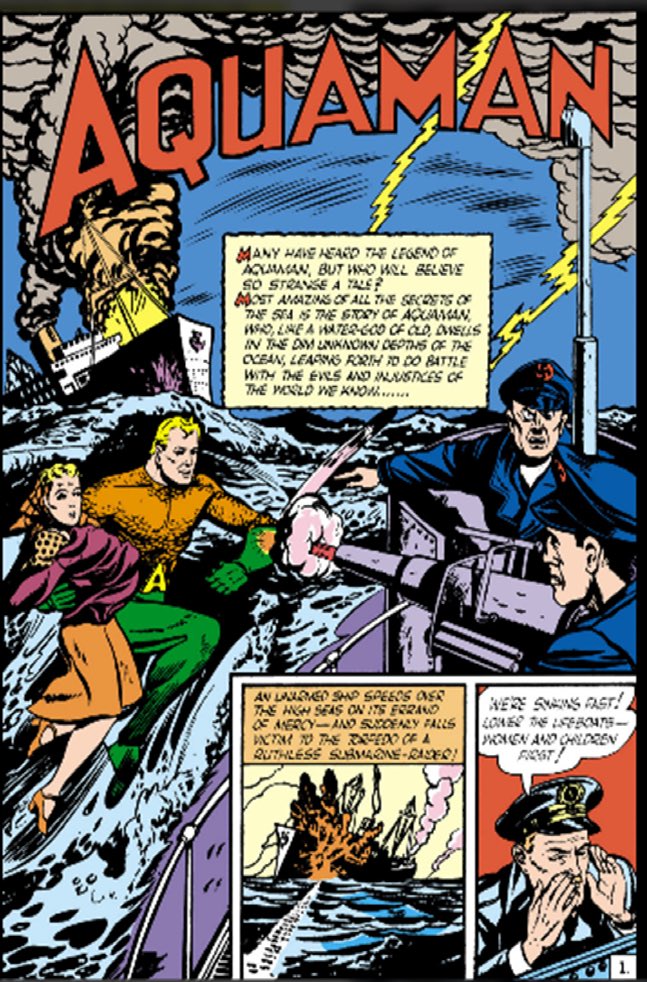
But the current definition of Aquaman's character every bit a royal half-human/half-Atlantean wasn't always part of his taradiddle. When the character debuted all the way back in 1941's Much Fun Comics #73, he was written as a man that had been changed scientifically into a water-breather.
"Atomic number 2 was pretty bland in the '50s," Morrison admits, remembering how the science-based character's superlative adventures were simply fighting against pirates and threats to shipping lanes.
"Aquaman,in his early appearances, was decidedly printed for a wide-right-eyed, Danton True Young consultation," says Keith Giffen, who wrote the character during the '80s. "When Aquaman first appeared, he was awheel around on seahorses, and it had a more immature aerate about it."
But that version of Aquaman's origin didn't have staying magnate, and in 1959, DC made him into Arthur Curry, the half-manlike/half-Atlantean royalty he remains today.
This new origin gave Aquaman a connection to both the mysterious sea world and the surface macrocosm, and according to Morrison, it was this "unwitting royalty" angle that really put down him apart from other characters.
"With Aquaman, it's not just the thought of being the King Arthur of the seas, only of first being the prince who doesn't jazz he's secretly royal," they say. "It's a story people receive ever wanted."
Afterward his new rootage write up was introduced in comic books, Arthur rose to the throne as king of Atlantis and married an subaqueous queen called Mera. Subsequent Aquaman stories in the '60s introduced a slew of original characters to his mythos, including his half-brother Orm who would eventually get over his nemesis, Sea Master.
Aquaman and the Justice Conference
But possibly no minute in Aquaman's history gave him such stamina as his inclusion in the Justice Conference of America when the team up debuted in 1960's The Fearless & The Bold #28, as wellspring as the character's presence in the Fantastic Friends Television show in the '70s and '80s.
Yet Aquaman's current appearances in Justice League stories also highlighted the dissenting side of him, says Kurt Busiek, who wrote the character in the middle-'00s.
"Out of pee, his powers aren't terribly limited - he's strong, but lots of superheroes are strong. And being able to communicate with fish is an easy ability to counterfeit when it's being compared against Superman, Wonder Woman, and the Flash," Busiek says.
Giffen says Aquaman became the butt of very much of jokes from fans because of his Super Friends appearances.
"It ma a little ridiculous sometimes," Giffen says. "All Justice League adventure had to consume some way to have Aquaman sustain wet."
Strengthening the Aquaman character
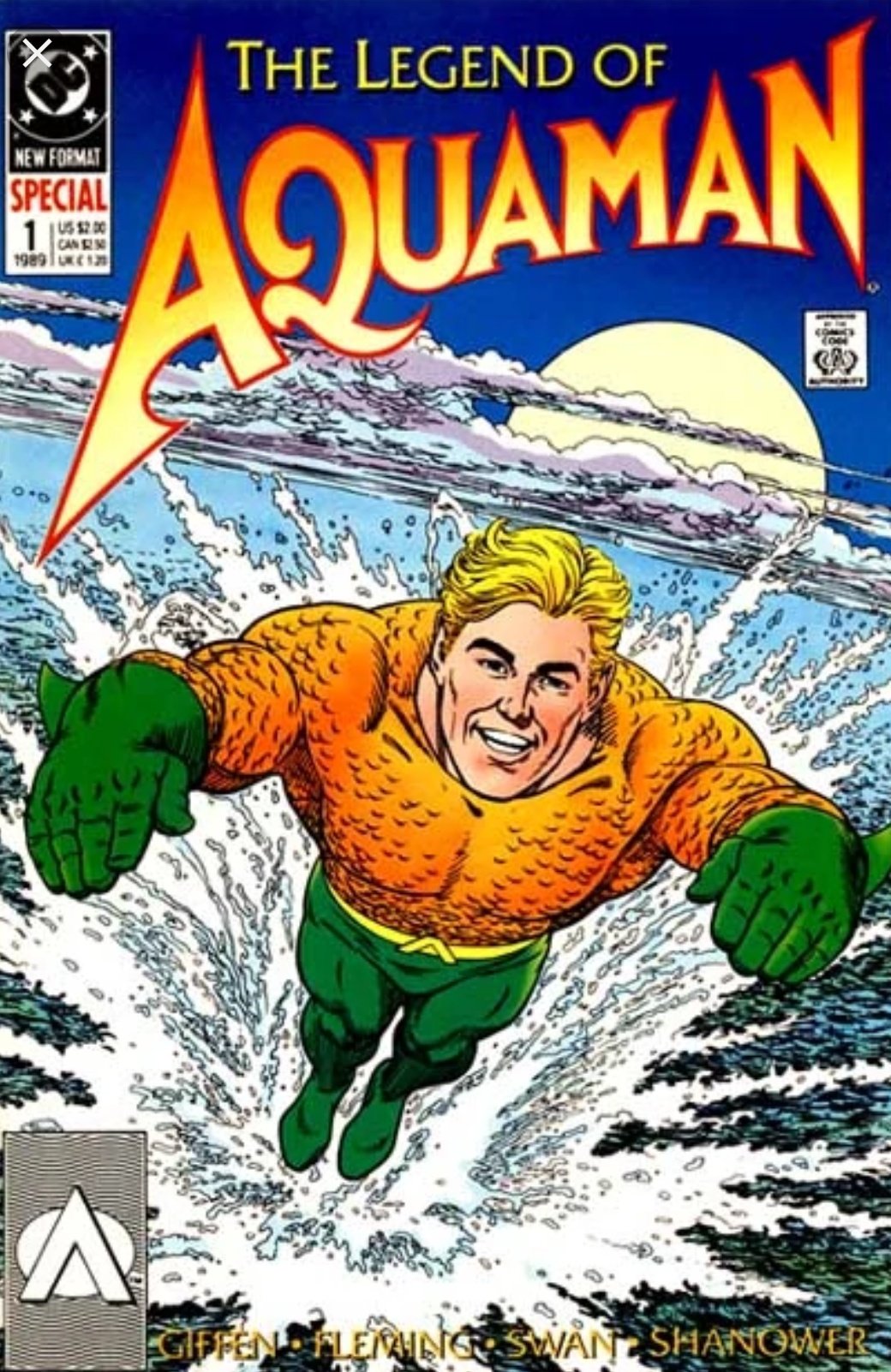
In the '80s and '90s, the character much struggled to find party favor among fans, as writers tried new origins and drastic changes to make him more spellbinding to modern-day audiences.
The Aquaman revamp Giffen helped orchestrate during that ERA tapped into a deeper, richer mythology for the fibre, renaming him Orin and fashioning him a fully Atlantean. But some of the changes made were a little more drastic, and Giffen once told Newsarama that atomic number 2 questions their wisdom.
Later in the '90s, the character got another vamp from David, whose Aquaman series was the longest-running for the character.
"I wanted to make him something of a bad screw, in comparison to the somewhat Goofy nice guy everyone remembered from the old Super Friends TV show," David says of his run.
The author as wel got rid of Aquaman's clean-switch off look, something the current Warner Bros. motion picture has echoed.
"When Zack Snyder first put up upward a picture of Jason Momoa as Aquaman, the modern 24-hour interval fans were saying, 'That doesn't look anything like-minded Aquaman!' But the older fans were expression, 'No, that's Peter David's Aquaman,'" David says. "I'm flattered that the up-to-date movie version is thought of as 'my' Aquaman."
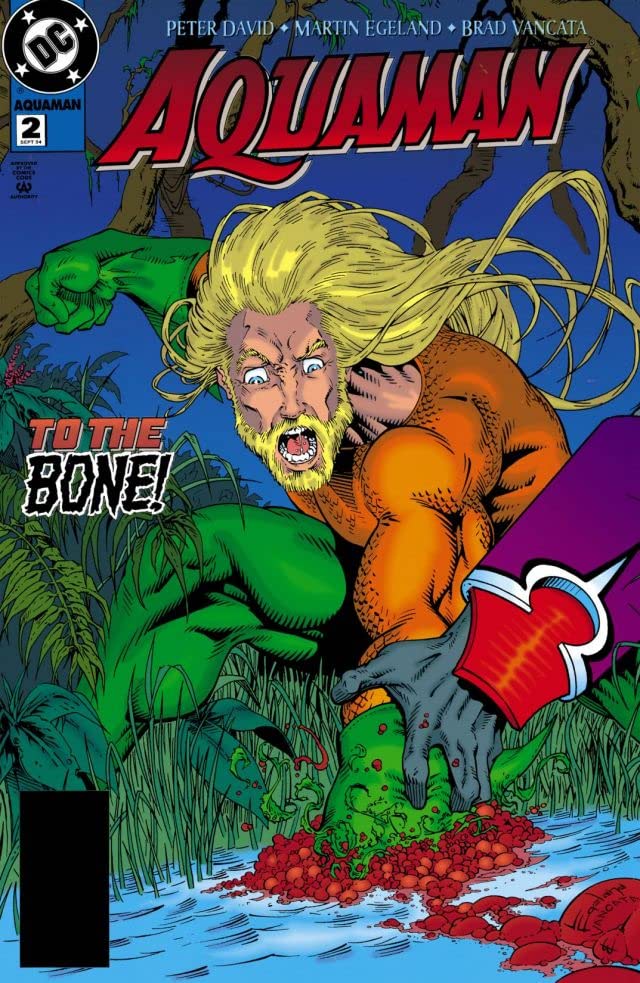
But one of the to the highest degree remembered moments in David's run occurred in Aquaman #2, when Aquaman lost his left hand and, eventually, replaced it with a harpoon.
"I wanted to change Aquaman's image," David says. "I wanted him to intimidate people, and on that point's no better way to do that than have him with some sort of weapon. I selected a harpoon because it's a weapon that is typically used against his suboceanic brethren, sol now helium had one that he can use up against denizens of the surface."
At length, Busiek's rivulet in 2006-2007 returned the character to his original, classic origin and mythology, but replaced him with a younger interpretation. It wasn't until 2010's Blackest Night that the unconventional character made his elated revert at the work force of Geoff Johns, the laughable book writer-off-movie executive who also has a writing cite on the Aquaman film.
Aquaman's relaunch resurgence
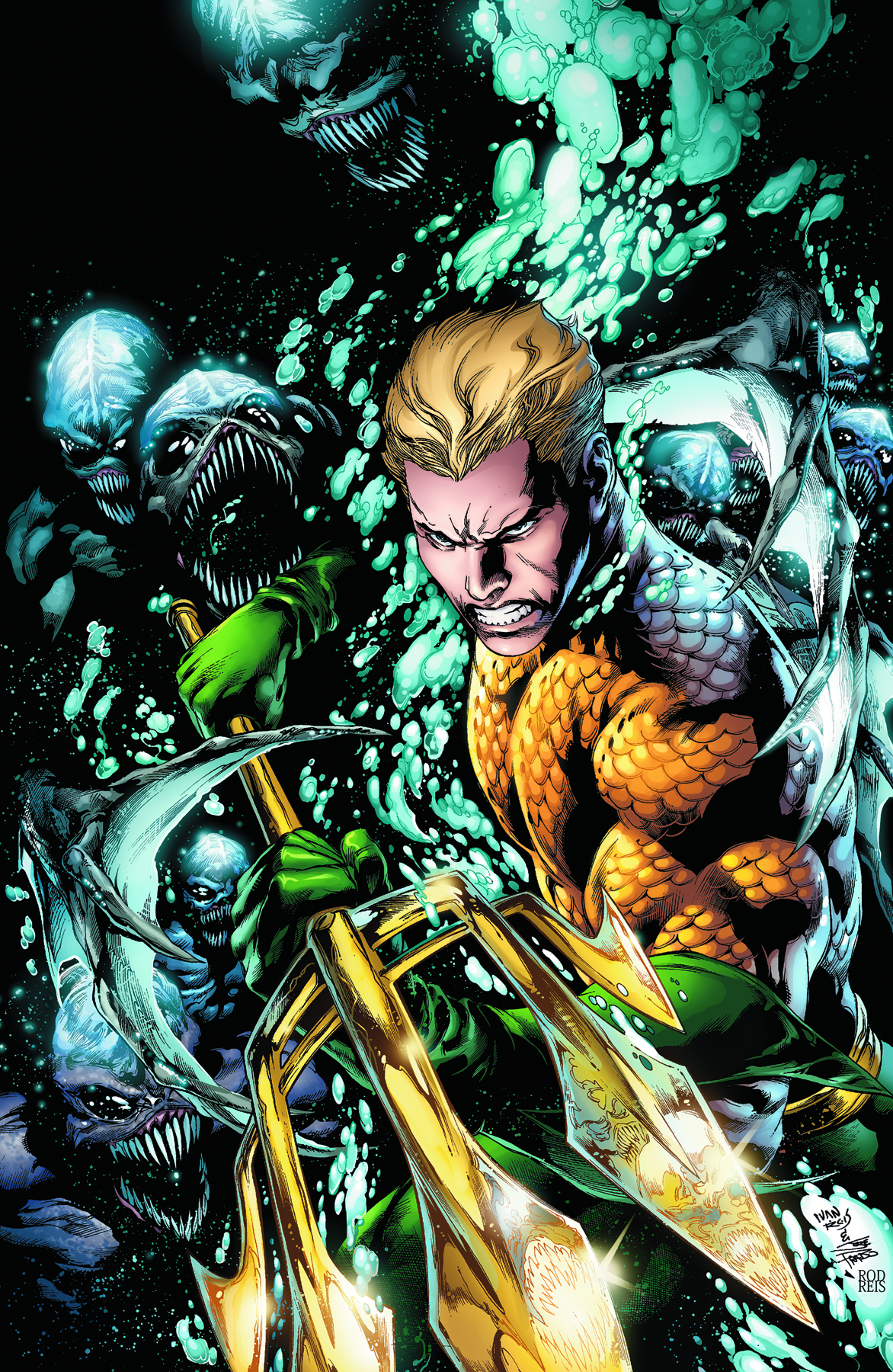
For several years after the character's return in Blackest Night, Johns and writer Dan Abnett continued to usher the character's phylogeny in comic books, including the return of characters like Mera and Ocean Master.
"I've forever really been fascinated with the character," Johns told Newsarama at the clock of his fresh Aquaman humorous book's plunge in 2011. "I think back thither's a great world to search with that character, with the ocean and the mythology that comes with that. And creating new things for that world, and expanding it, was compelling to me atomic number 3 a writer. I thought it was a avid challenge."
Johns also embraced the "humorous" perception of Aquaman.
"Aquaman is this guy who, toward land, he's kind of laughed at," the writer said. "But in the ocean, he's supposed to constitute the world-beater of this huge underwater society, and so there's a weird juxtaposition between those two roles. And he prefers to cost on demesne, and his job is to protect the farming from deep-sea and the oversea from land. So he's literally caught midmost of totally these things.
"I think everyone [can] tie in to Aquaman. I think he's very, very human, because of all that," Johns said. "Simply he's too estimable because he does step to the fore and take care of business, and He doesn't let what anyone says stop him. He lets information technology pluck right off his back like water."
Aquaman's newer developments
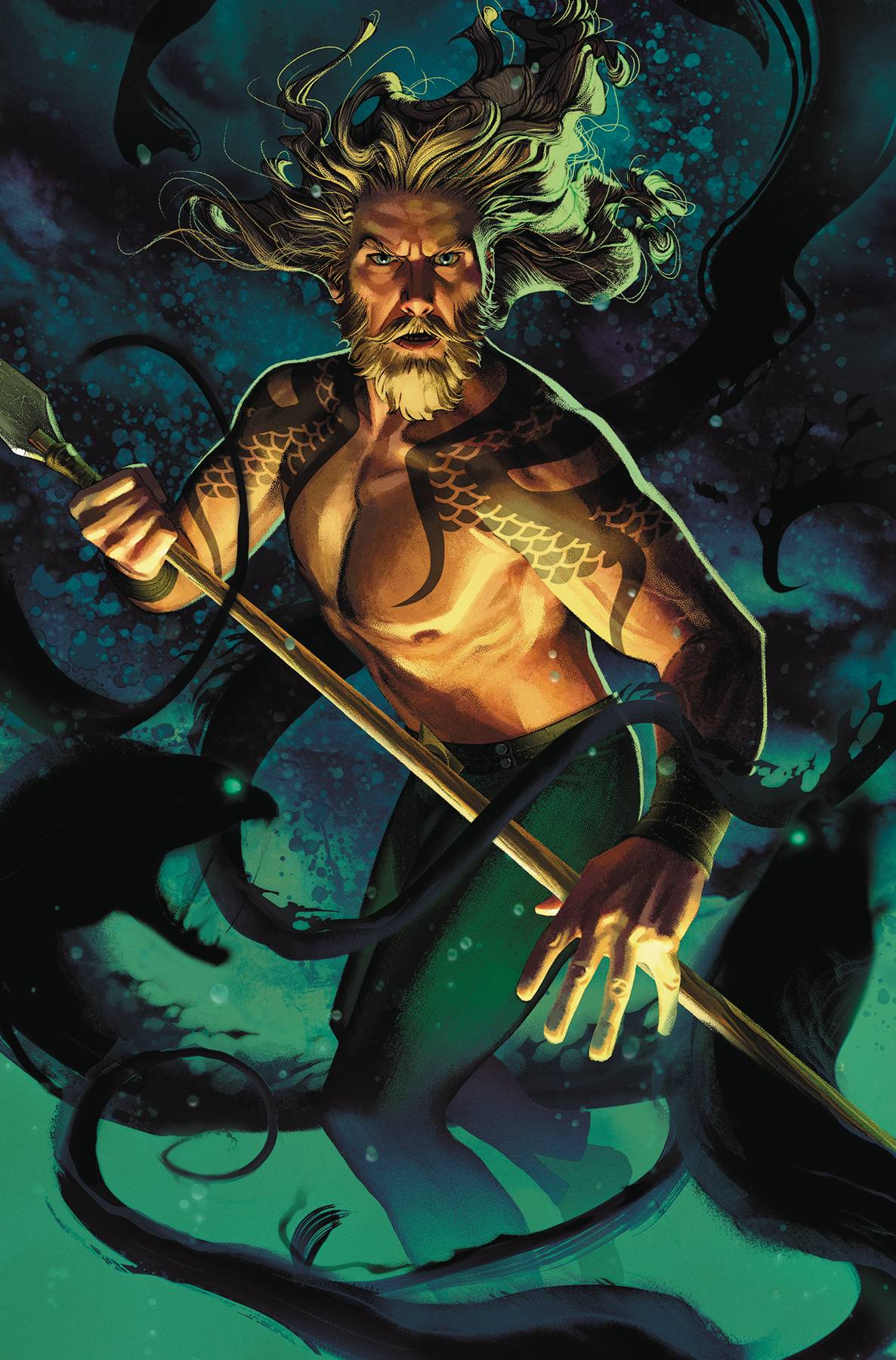
Although the Aquaman film echoes some of the character's Thomas More beloved history, the character continues to go through novel incarnations in the comic books.
After an arresting geological period where atomic number 2 had blackout, Aquaman regained his memory and returned to his life - even marrying his long-clock time lover Mera, after they welcomed a kid together named Andy.
And in Scott Snyder's recent Justice League run, Aquaman's superpowers were coupled to a 'Life Force' that connects all Earth's creatures.
"Aquaman's powers are what they've ever been," aforementioned current Judge League author Scott Snyder. "But we wanted to kind of run low book binding and see if thither's a way to expand the meaning behind them."
Whatever comes following for the character, mainstream audiences will probably know him unexcelled (for at least the near future) as the character portrayed in the Aquaman plastic film. And his story in comic books will continue to evolve.
Make sure you've translate the topper Aquaman stories out there.
Source: https://www.gamesradar.com/how-aquaman-fought-against-the-tide-to-become-one-of-dcs-and-the-movie-industrys-biggest-superheroes/
Posted by: allenanothe.blogspot.com


0 Response to "How Aquaman fought against the tide to become one of DC's (and the movie industry's) biggest superheroes - allenanothe"
Post a Comment